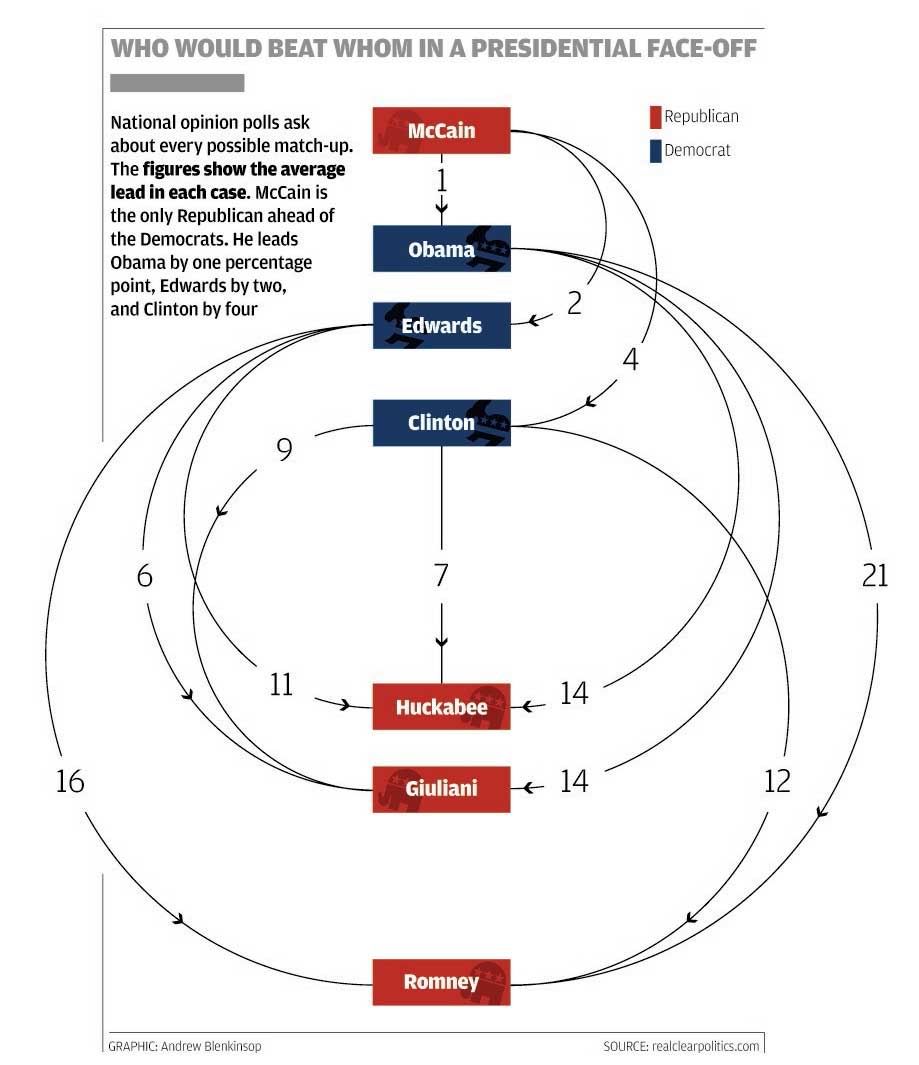Some days ago, The Independent on Sunday published this graphic about USA elections. It explains the results of a poll bout who would defeat who on a presidential face-off. Each democrat against each republin and each republican against each democrat, and the victory margin.

I have some little problems to understand the key at first sight, but I should put the blame on my english in this case. But, I agree with Michal Agar, chief of infographics at thel IoS, who spok about it with the terms 'modern infographic'. I wouldn't use the word 'modern', but because in spanish it has several connotations, more suitable for fashion than innovation. But I think is a kind of infographics we need now and in the future. It manage to explain, visually, a lot of data, and with order. Maybe the general reader need a little time to get used to it, but people now have a wider visual culture. Of curse, it depends on the topic. Each graphi, topic, country... has it own reader and style. But some news,maybe for their complexity, need a visual system beyond bars, pies and evolutions.
NYTimes.com is in this trend. As Matthew Ericsson, ma of the house, said about online graphics: "You've got t build graphics for both Bart and Lisa Simpson. Lisa will get a lot of information and will take cloncusions, and Bart can play with it".
Newspapers (print) have to offer a plus that internet, radio and TV can't offer. And it could be reflexion. Time. Tv and radio don't have time to get inside the new, analyze it and take a time to explain it. Sit in teh sofa with a graphic and observe all the variables and possibilities is proper pf print. And just internet can be a competitor for that.
Elections (spanish and american) are coming ahead. Good moment to start trying these kind of graphics. Because we have a big bunch of boring data that we have to present on an attractive way, because people want o know about that. Explain hard data on a visual way.
Thanks to Michael Agar














